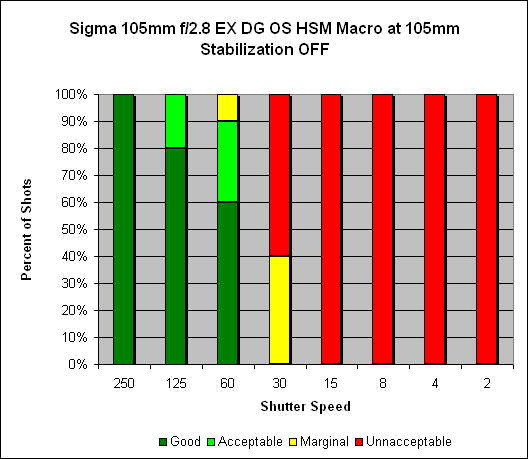Most people tend to think of image stabilization as being mainly for telephoto lenses. While it's true that their longer focal lengths tend to magnify the effects of camera shake, image stabilization can provde a very useful assist at wider angle focal lengths as well; anyone who's ever tried to blur the image of a waterfall, while keeping the surrounding landsape tack-sharp knows exactly what I'm talking about.
The ''1/focal length'' rule of thumb holds true with this lens when image stabilization is not activated, with a shutter speed of 1/125 providing consistently sharp images. When image stabilization is activated we see some interesting results. We note around two or two-and-a-half stops of stabilization with OS activated, but there is a definite caveat in play: The stabilizer's performance with the shutter speed of 1/60s. None of our shots were tack-sharp with OS engaged at 1/60s, with eighty per cent of our test shots were only acceptable at this shutter speed, showing some level of blur. With OS disengaged, we got better performance at 1/60s (60% of our shots were very sharp). Other slower shutter speeds (1/30, 1/15s) showed better performance, with 60-70% being perfectly sharp.
 |
| Mouse over this chart to show results with IS activated. |
IS systems tend to provide more benefit to less-stable shooters than very steady ones, so most users will see the same or greater amounts of shake reduction as we measured here. You can read more about our IS test methodology here: SLRgear IS Test Methodology, v2.
